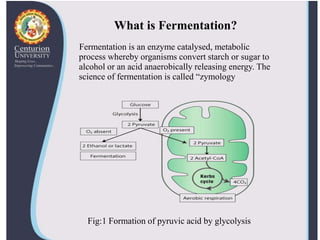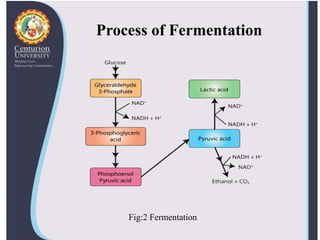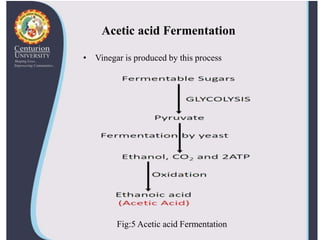This document presents information on microbial fermentation. It discusses the definition of fermentation as an enzyme-catalyzed process where organisms convert sugar to alcohol or acid without oxygen. It describes the main types of fermentation including lactic acid, alcohol, acetic acid, and butyric acid fermentation. Advantages of fermentation are also highlighted such as improving digestion and immune function. The conclusion restates that fermentation breaks down sugars to produce chemical energy without oxygen in the form of products like ethanol, lactic acid, and hydrogen gas.













